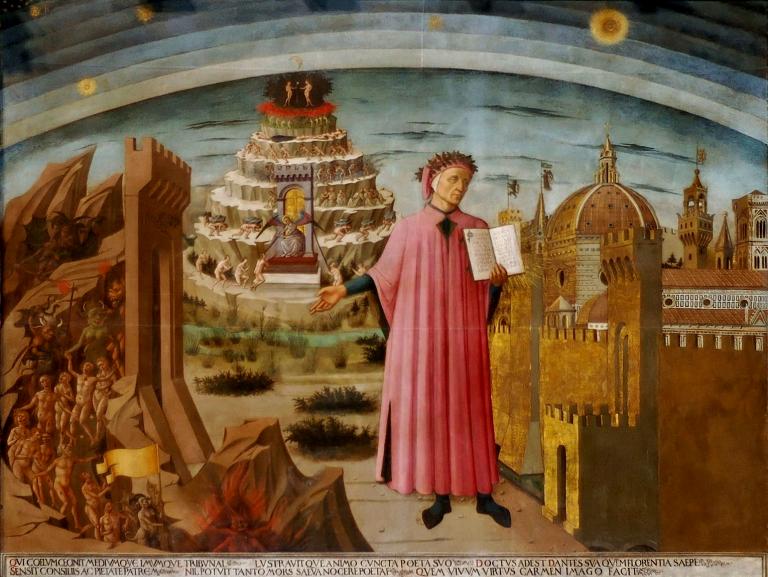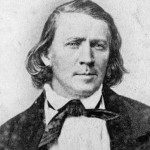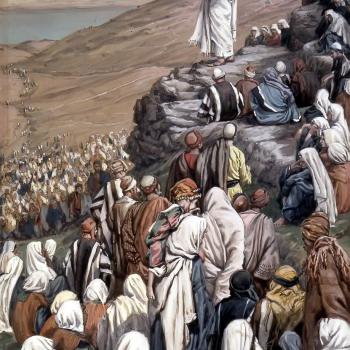
(Wikimedia Commons public domain image)
I was otherwise occupied yesterday, so I failed to note the appearance of two new articles on the website of the Interpreter Foundation:
““They Shall Be Scattered Again”: Some Notes on JST Genesis 50:24–25, 33–35” was written by Matthew L. Bowen.
Abstract: This article examines the extension of the etiological wordplay on the name Joseph (in terms of the Hebrew verbs ʾāsap and yāsap), recurrent in the canonical text of Genesis, into the JST Genesis 50 text, where Joseph learns about and prophesies of a future “Joseph” who would help gather Israel after they had been “scattered again” by the Lord. This article also analyzes the pairing of the prophetic and seeric roles of Moses and the latter-day “Joseph” at the beginning and ending of JST Genesis and explores the significance of this framing. The importance of Moses and Joseph Smith writing the word of the Lord in order to fulfill their prophetic responsibility to “gather” Israel emerges.
“Interpreting Interpreter: Scattered JST Wordplay,” was written by Kyler Rasmussen
This post is a summary of the article ““They Shall Be Scattered Again”: Some Notes on JST Genesis 50:24–25, 33–35” by Matthew L. Bowen in Volume 57 of Interpreter: A Journal of Latter-day Saint Faith and Scholarship. An introduction to the Interpreting Interpreter series is available at https://interpreterfoundation.org/interpreting-interpreter-on-abstracting-thought/.
The Takeaway: Bowen argues that the Joseph Smith Translation text of Genesis 50 contains wordplay involving the word Joseph—and the concepts of scattering (again) and gathering—with the prophetic bookends of the JST highlighting both Moses’ and Joseph Smith’s roles in gathering Israel.

There are few events that I am less enthusiastic about attending than funerals. But there are few events that are, in their way, more inspirational to me than the funerals of good people. Attending them is like reading the final chapter of a satisfying book, but better. And also worse, because they sometimes remind me how great a gulf there is between my life and the lives of the people that are being celebrated. (It’s ironic that, while I’m pretty much completely innocent of the crimes and depravities alleged against me daily at the Peterson Obsession Board, I’m deeply flawed in more subtle but fundamental and frustrating ways that quite escape those zealous critics. [Hence, the image of Purgatory above.] If they only knew!)
Now, I’m well aware of the principle Nil nisi bonum (more completely, De mortuis nil nisi bonum dicendum est, roughly “Of the dead nothing but good is to be said”), and I’m fully acquainted with the fact that funeral eulogies invariably emphasize the good and neglect anything bad. After all, the term εὐλογία, eulogia, means “good words.” Referring to his own funeral talks, J. Golden Kimball is said to have reflected that he’d “given many a man a ticket to the celestial glory” that he “knew damned well wouldn’t get him more than halfway there.” But I’ve attended more than a few funerals in which I knew from personal experience that the praise being offered to the deceased was not false or exaggerated. My wife and I attended such a funeral this morning, for a long-time member of our ward, Sid Allsop, who led a quietly remarkable long life of service, kindness, and accomplishment: Marvin Sid Allsop.
I say that such funerals are inspirational, and they are. But they can also be a bit discouraging. I can try to be better, but fundamental changes are difficult. It’s rather like saying to a marathon runner or to a long-distance swimmer that he could win the race if he would just run faster or swim faster in those last minutes. Easier said than done! If I had it in me to be a vastly better person, I could maybe make the needed improvements. But we’re limited by energy, upbringing, personality traits, areas of unawareness, and so forth. So changes, when they come at all, tend to be small and incremental.
Once, when I was serving in an ecclesiastical position that involved frequent interviews with college-age young people, I encountered at least two returned missionaries who told me confidently, and separately, of their plans to be “perfect” — their word — by the age of twenty-five or, at the latest, thirty. I tried to be supportive and not disrespectful. (Successfully, I hope.) But I tried to gently let them know that, while I admired their idealism and commitment, the road to perfection might be at least a little bit longer and steeper than they imagined.

Over very nearly the past eleven years, I’ve received thousands of email messages from an anonymous admirer reminding me that I’m ugly, a loser, an embarrassment to my family, a blight on academia, a joke, childish and immature, a mindless and dishonest bootlicker to the Brethren, a mercenary hack, an exploiter of poor tithe payers, and so forth. (The themes seldom vary much. Lately, my correspondent has been averaging probably about five or six such notes daily, although the number of them sent in a day has sometimes risen to at least thirteen.)
In that light, it’s occasionally a relief to be reminded that my life hasn’t been a complete waste of food and oxygen and other valuable resources. Back in the 1990s, for instance, I conceived and founded the Islamic Translation Series at Brigham Young University, which eventually grew into the more comprehensive Middle Eastern Texts Initiative. As it happens, the second book that we published in the project was a dual-language Arabic-English translation of al-Ghazali’s late eleventh- or early twelfth-century Mishkat al-Anwar (“The Niche of Lights”), translated by David Buchman. And now, Allen Hansen, an Israeli-American Latter-day Saint, has kindly sent me a note about the reception of that book by an Israeli scholar, I hope that Allen won’t mind my reproducing what he sent to me:
Daniel, I came across something you’d appreciate. I just had delivered a copy of al-Ghazali’s Mishkat al-Anwar translated into Hebrew by Avi Elqayam. This was published by Magnes Press, a top-tier academic press in Israel. It is what the Hebrew University uses. This edition also includes the two medieval Hebrew translations of Mishkat al-Anwar. Anyway, The section on translations has nothing but good things to say about Buchman’s English translation METI published! Elqayam’s really interesting. He’s a professor of Jewish and Muslim mysticism who for the past few years has been engaging in reviving Jewish-Muslim Sufi spirituality to enrich both traditions and encourage peace. He’s been translating a lot of Muslim works, such as al-Hallaj’s Diwan and other writings. I thought you’d be happy to know that people are using METI texts not only for academic purposes, but for spiritual and cultural enrichment. That was one of you original goals, wasn’t it?
It was, indeed. And I do indeed appreciate his note.
“There are two translations into English of the Mishkat al-Anwar. Gairdner’s is an idiomatic translation, whereas Buchman’s is more literal. Gairdner’s English translation follows the 1907 Cairo edition. Buchman’s was translated according to Afifi’s critical edition, Cairo, 1964.”













